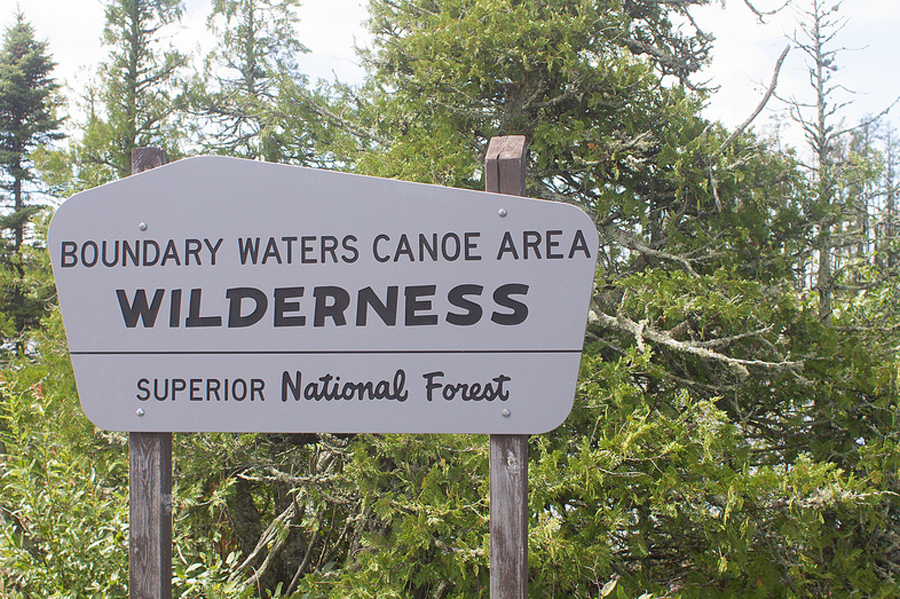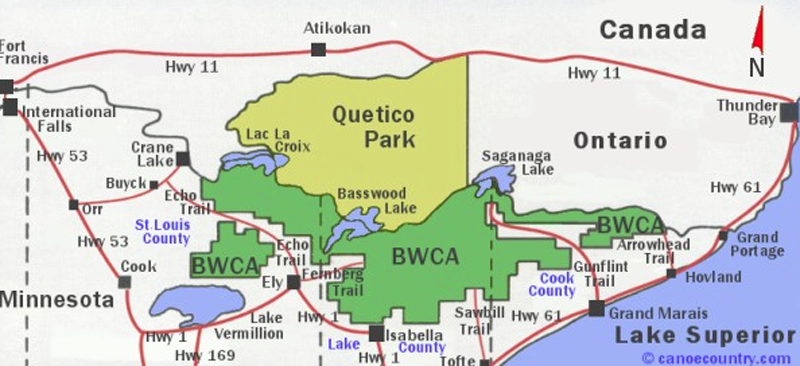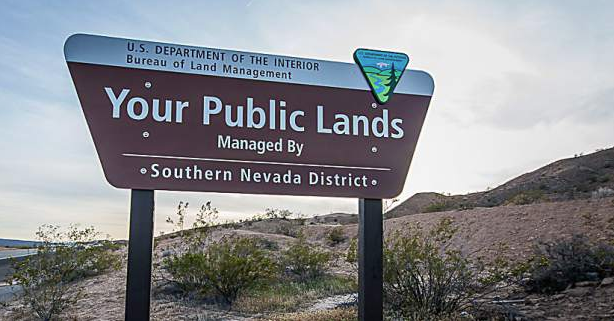
Antofagasta, the company behind ending the earth as we know it invades MN. Like in Alaska, you can get lost here without trying too hard to do so. The fly fishing is awesome – pick your fish and pick your season.
Minnesota’s Boundary Waters Watershed at Risk from Mining
The Boundary Water Canoe Area Wilderness (BWCAW) is located in the northern area of Superior National Forest in northeastern Minnesota. This unique landscape, carved by glaciers, features thousands of lakes and streams and offers a plethora of hunting, fishing, camping, and paddling opportunities. In fact, the BWCAW is the most visited Wilderness area in the United States! More than 25,000 visitors come here each year to revel in the BWCAW’s 1.1 million acres of protected Wilderness, 237.5 miles of overnight hiking trails, 1200 miles of canoe and kayak routes, and 2000 designated campsites. It is the largest Wilderness area east of the Rocky Mountains and north of the Florida Everglades.
BWCAW and the larger Superior National Forest are significant drivers of the economy in northeastern Minnesota. Superior National Forest generates $500 million in economic activity annually, of which $100 million is attributed to the BWCAW.
Minnesota needs to protects 234,328 acres of federal land and waters within the Superior National Forest from risky sulfide-ore copper mining.

Sulfide ore mpact zones.
Minnesota has never given anyone a permit to mine sulfide ore copper in the state. But now Twin Metals, owned by Chilean mining company Antofagasta, is seeking to become the first sulfide copper mine in Minnesota – and they’re aiming to operate in Superior National Forest, just outside of the BWCAW and within its watershed. That would be a disaster for the Wilderness area: byproducts of sulfide copper mining include hazardous pollutants like sulfuric acid and heavy metals which, if they contaminate the pristine waters feeding the BWCAW, could remain for years or even decades.
“Bribery, corruption surrounds Antofagasta” — London Mining Network
H.R. 5598, the Boundary Waters Wilderness Protection and Pollution Prevention Act, was introduced by a bipartisan group of elected officials in the House of Representatives on Tuesday, January 14th. This legislation would ensure permanent protection of the Boundary Waters from any future copper-nickel mineral leasing in its watershed, and completes a mineral withdrawal originally proposed by the United States Forest Service in 2016. A withdrawal of mineral leases in the proposed area is the best way to ensure the Boundary Waters remains permanently protected for future generations, as Congress originally intended with the passage of the Wilderness Act of 1964 and Boundary Waters Canoe Area Wilderness Act of 1978.







